Review of popular low-growing juniper varieties and their cultivation
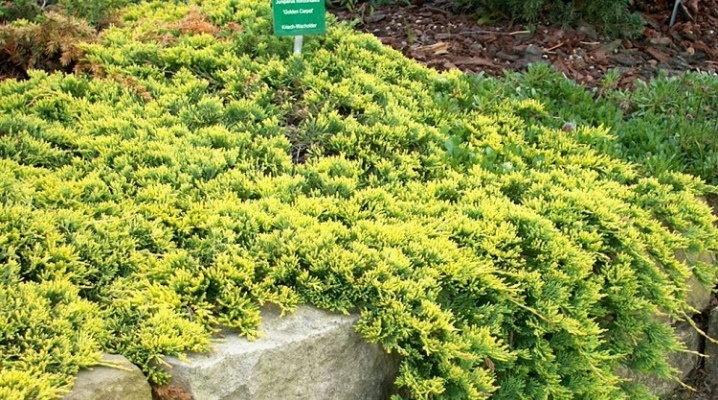
Juniper is a coniferous evergreen plant. Due to the variety of colors and shapes, beauty and original appearance, it often becomes a decorative decoration of flower beds, parks, summer cottages and household plots. Indeed, there are so many species of this plant that it is possible to choose a plant for every taste. A special place among them is occupied by a group of undersized junipers.
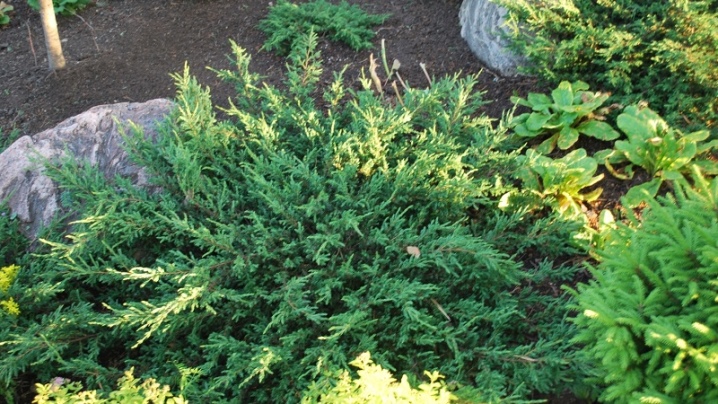
Peculiarities
Most varieties of low-growing junipers cannot be called unpretentious. They require some care and are quite difficult to take root. However, this coniferous shrub can replace the traditional lawn by planting creeping juniper varieties that will grow exclusively in breadth and delight with their appearance all year round. In addition, the cleansing properties of juniper are widely known. The shrub very effectively cleans the air around itself, secretes special substances - phytoncides, which are capable of killing microbes in the surrounding space.
The aroma of this plant helps relieve tension, improves mood, strengthens the immune system, and fights against colds.
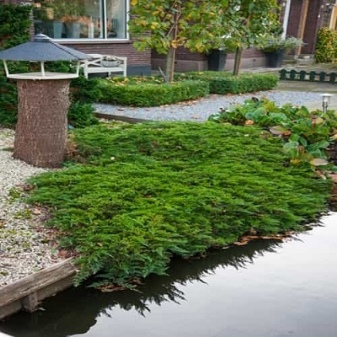
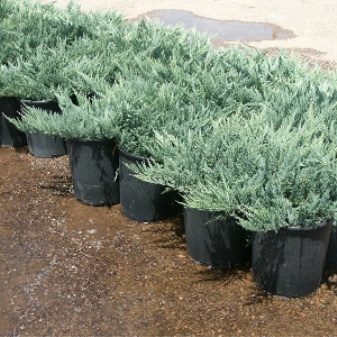
How to grow?
Care and cultivation at home requires the fulfillment of special conditions.
- Priming. Low-growing junipers are demanding on the quality of the soil. Their root system needs a loose and nutritious soil, otherwise it will be difficult for the plant to take root. You can make a mixture of peat, earth and sand yourself, or you can buy a special mixture at the store.
- Drainage system. Due to the peculiarities of the root system, moisture should also not be allowed to stagnate, because this can lead to the death of the shrub. Drainage can be done independently from rubble or expanded clay.
- Location. Dwarf junipers prefer warmth and light. This must be taken into account when landing.
- Watering. The plant does not tolerate an abundance of moisture. Therefore, generous and regular watering will negatively affect it. But he is not afraid of dry weather.
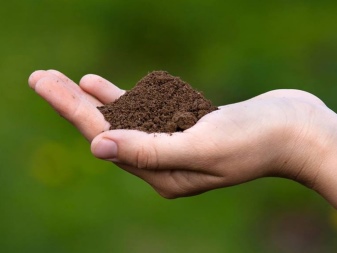
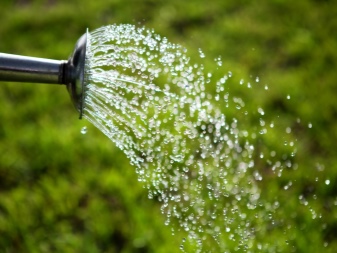
Varieties
Descriptions of popular undersized juniper varieties confirm their diversity.
- Green Carpet ("Green Carpet") - a representative of one of the smallest varieties of juniper with a height of only about 10 centimeters. The bush grows up to half a meter in diameter. The color is light green, needles are thornless, soft. It is popular with gardeners, as it is unpretentious to the composition of the soil, tolerates partial shade well and does without watering for a long time. Frost-resistant, it can even withstand 40-degree frosts.
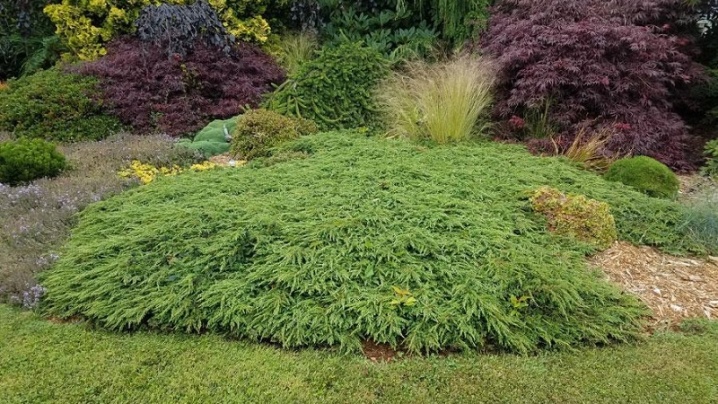
- Wiltonii ("Wiltoni"). It is also one of the lowest species, reaching a height of 10 cm. This variety grows very slowly, so it is difficult to determine the diameter of the shrub. Because of this feature, it is planted in large groups, as well as on alpine hills.
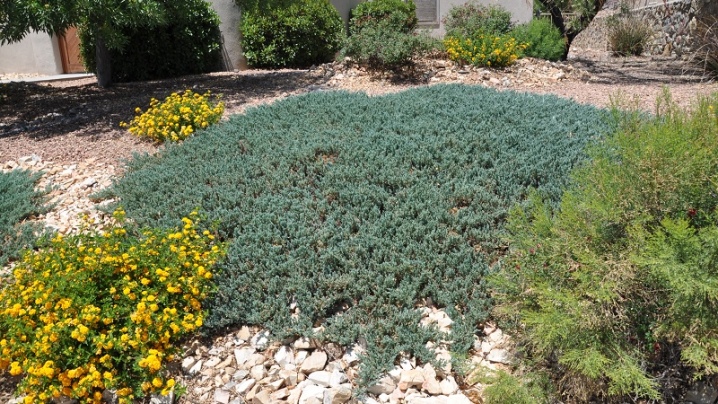
- Golden Carpet ("Golden Carpet"). Differs in an unusual color - the color of the needles of a delicate golden hue. It reaches a height of 15 centimeters.
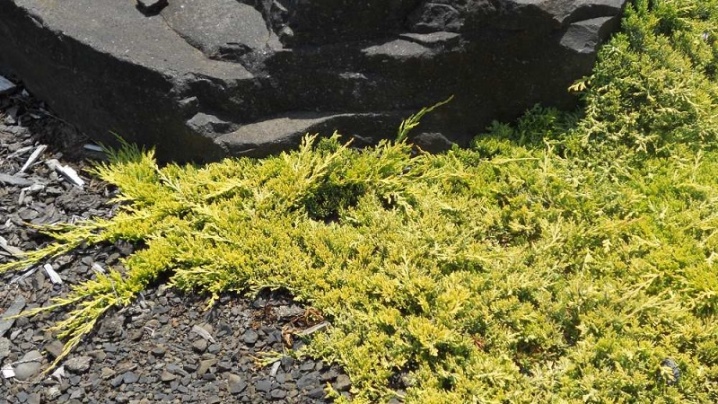
- Repanda. Dwarf creeping juniper. It grows up to one and a half meters wide, about 30 centimeters high. Extremely unpretentious to the surrounding conditions: frost-resistant, does without watering. The needles are soft.

- Ice Blue - dwarf species with unusual long branches, low (about 15 cm). It is interesting for its color: in winter it is purple, and in the warm season it changes to blue with a green tint.
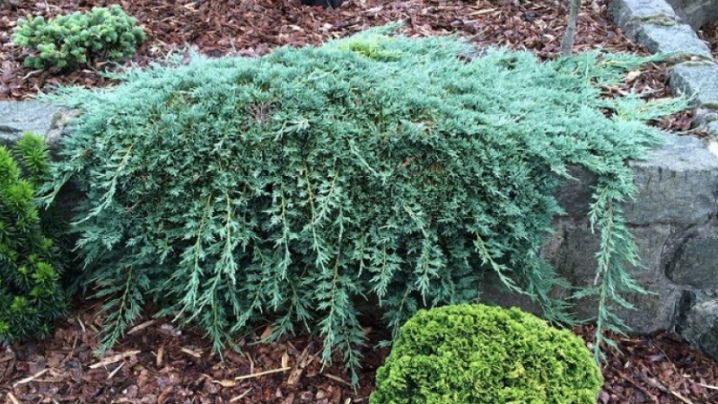
- Blue Carpet is a type of scaly, low-growing juniper. Shrub up to 30 m high and up to 1.5 m wide in diameter, beautiful blue color, grows slowly. The needles are prickly, so you need to carefully choose the landing site.
It does not tolerate severe frosts very well, but it is undemanding to the quality of the soil.

- Spotty Spreader. A subspecies of creeping juniper, reaches two meters in diameter and 30 cm in height. Soft green needles, the tips of the branches are beige, but darken in the shade. The plant is light-loving and frost-resistant.
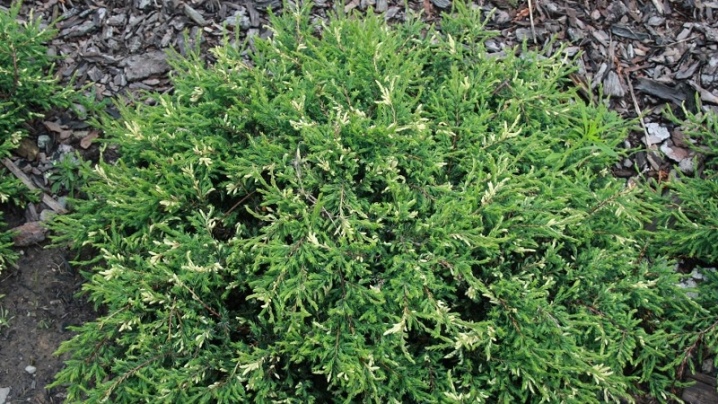
- Pfitzeriana Compacta ("Pfitzeriana Compacta"). It is a shrub up to two meters in diameter and up to 30 centimeters high. High growth rate, soft needles, pleasant green color.
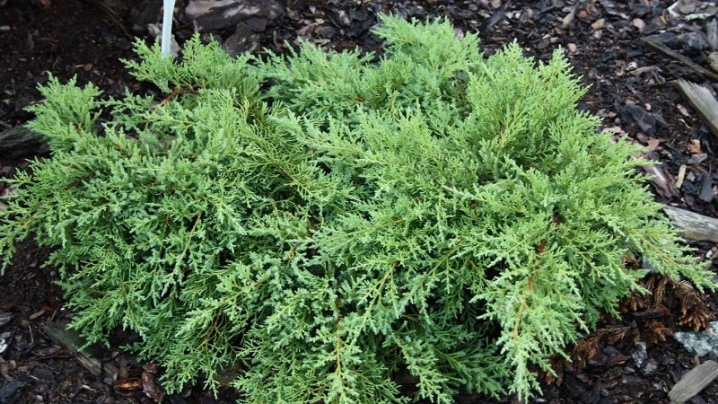
- Prostrata ("Prostrata"). The bush has an unusual appearance: at a height of about 30 cm, it has very long shoots creeping along the ground (up to 4 meters in length). You can successfully choose a planting site so that the branches hang down.
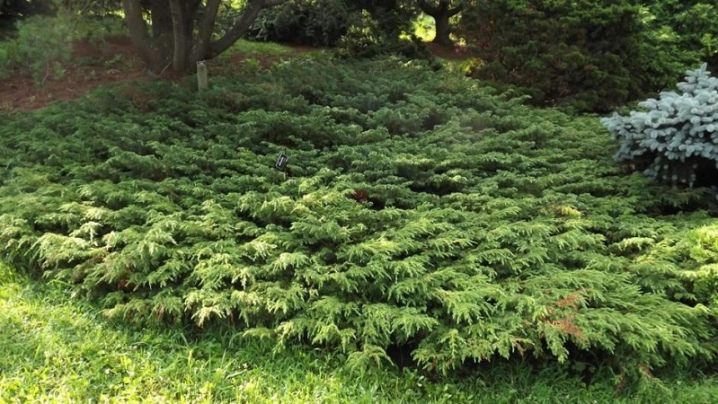
- Blue Chip ("Blue Chip"). A dwarf subspecies, it grows more than a meter in width, up to 30 centimeters in height. Low growth rate, beautiful blue needles, rather thorny. It tolerates even very low temperatures, prefers good lighting. Excessive watering and stagnant water should not be allowed.
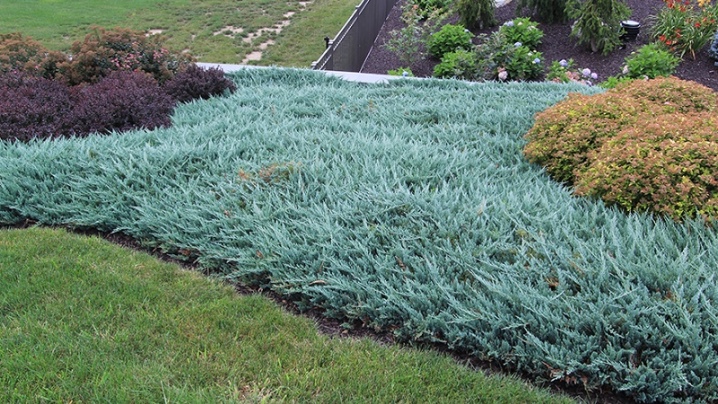
- Prince of Wales ("Prince of Wales"). One of the most popular varieties, often planted on slopes to strengthen the soil. Changes the color of the needles depending on the season: in summer - blue, in winter - red. About 30 cm in height and 2.5 m in spread.
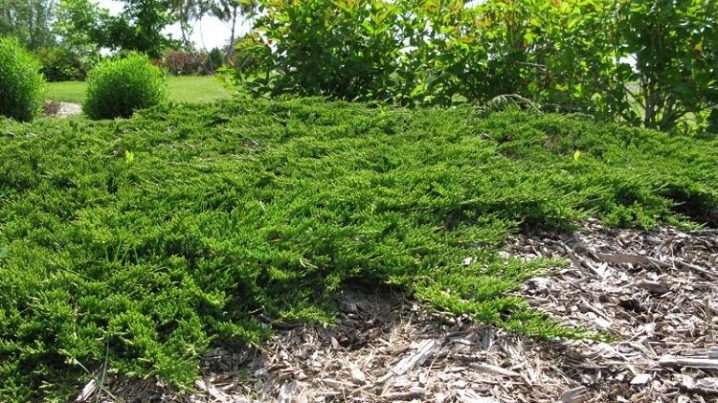
- Holger ("Holger"). A scaly species of juniper. It has an original two-color color - young needles at the tips of the shoots are golden, and the older one is green. It grows quite widely.

- Variegata ("Variegata"). One of the representatives of the Cossack juniper species, the most unpretentious of all. It also combines 2 colors - green and beige. Light-loving and frost-resistant variety.
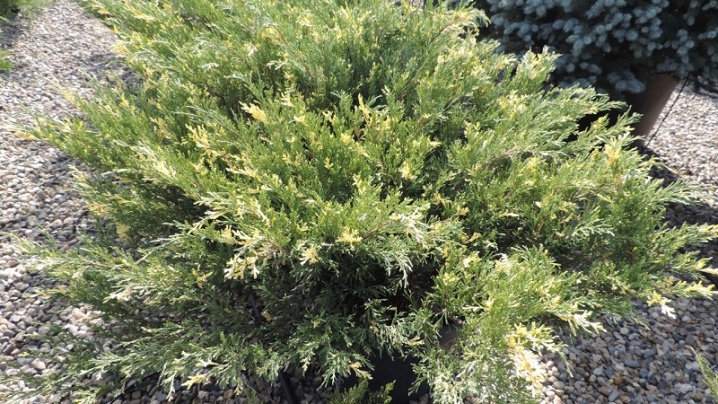
In the next video, a Greener expert will talk about planting and caring for a juniper.



































































The comment was sent successfully.